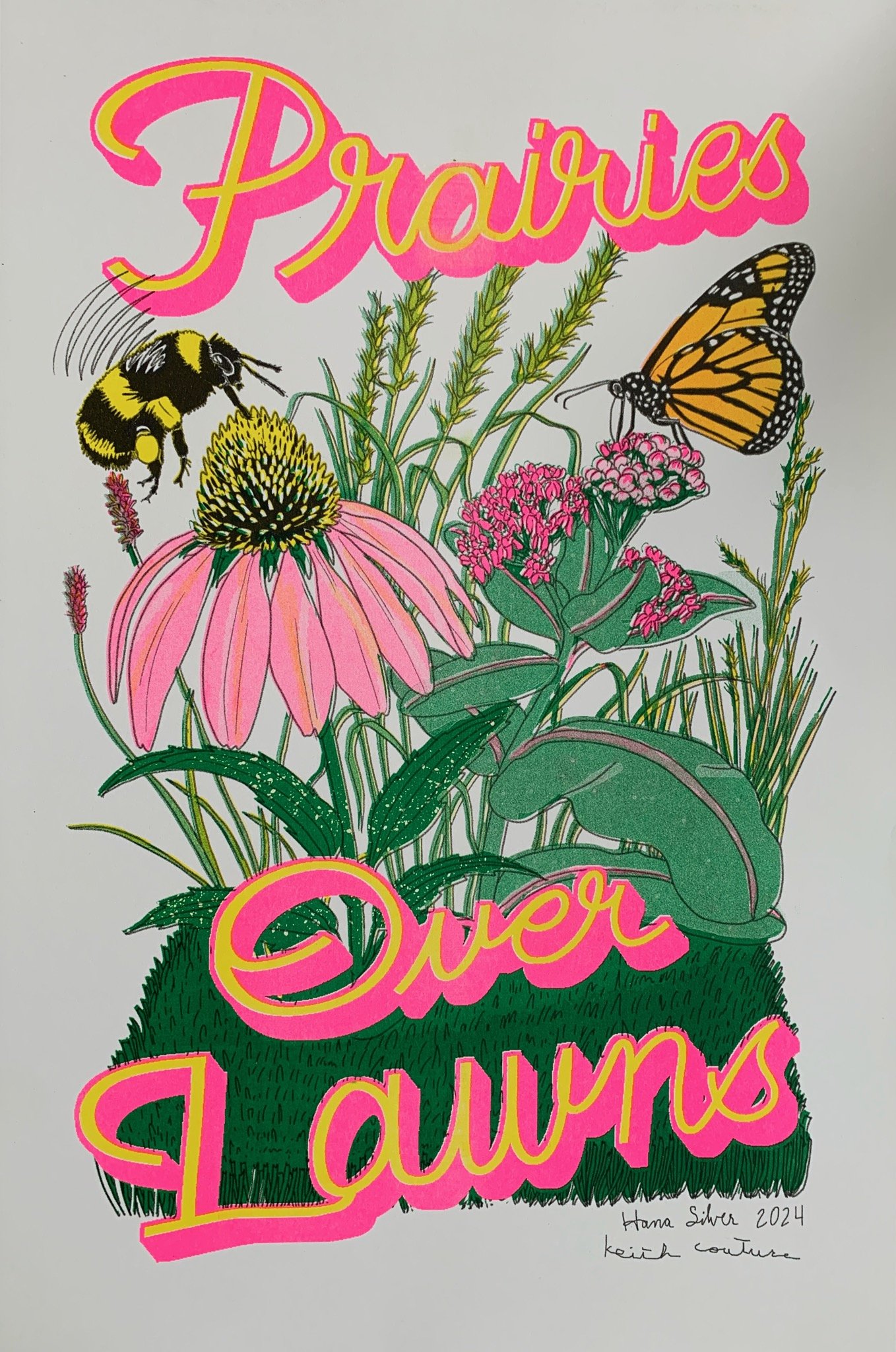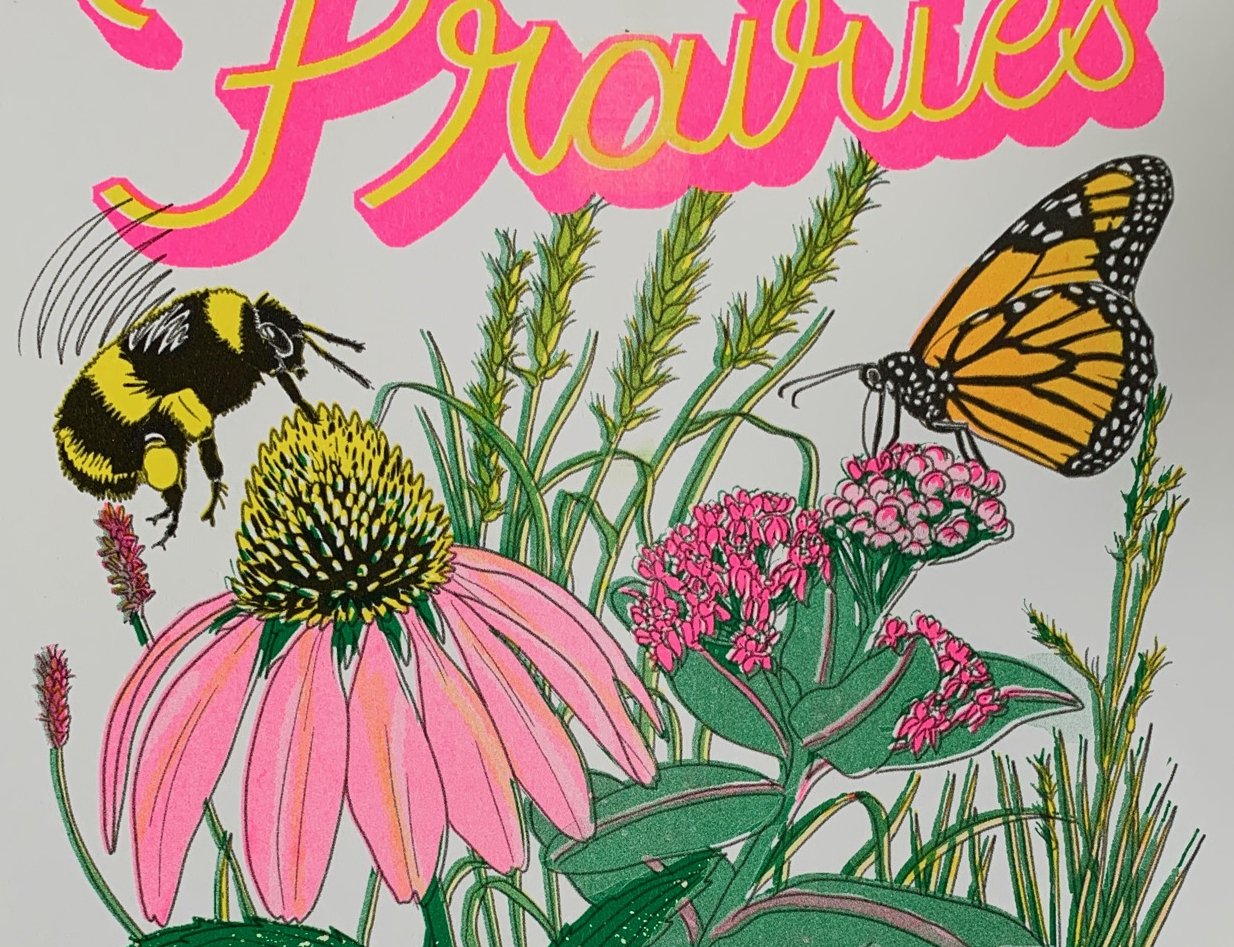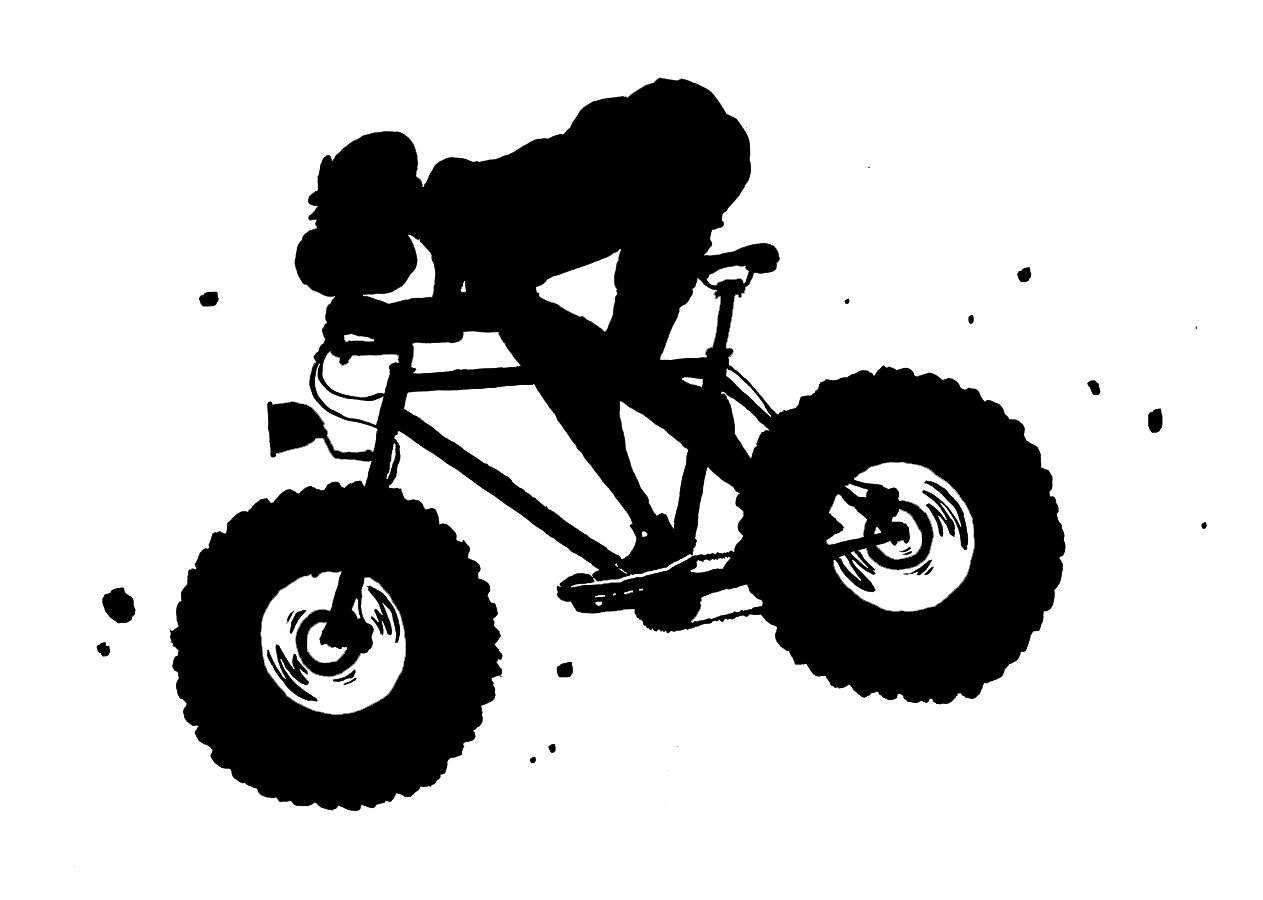 Image 1 of 2
Image 1 of 2

 Image 2 of 2
Image 2 of 2



Prairies Over Lawns Risograph print
Prairies are a grassland ecosystem made predominantly of herbaceous plants. This includes grasses and forbs (another name for the native flowering plants of the prairie), both of which have extensive root systems which grow deep into the ground and can comprise up to 75% of a plant’s total biomass. Trees may be present, but when they are they’re few and far between, usually hugging more protected sites along creeks and rivers.
When Illinois became a U.S. state in 1818, it had 22 million acres of prairie grasslands and 14 million acres of forests. Now, only .006% of the original prairie and forests remain. The reasons are depressingly familiar: white colonizers came to Illinois and all over the U.S., divided it up into tracts, sold it, and developed the land for grazing and especially farming on the rich topsoil. The U.S. Government passed the 1830 Indian Removal Act, deporting the original stewards of the prairie from their ancestral lands, and then granted the land to large corporations and moneyed interests – for example, in 1851, the U.S. government granted 2.5 million acres (11%) of prairie land to the Illinois Central Railroad. Corn planting in Illinois currently uses about 11 million acres. Soybean planting makes up another 10.8 million acres.
Prairies are like the rainforest of North America: exceptionally good at trapping carbon. Even when there are wildfires and plant matter is burned up, the majority of carbon they create through photosynthesis is below the ground in their root systems.
Prairies provide enormous benefits! Their woven lattice of roots gives structure to the soil so it doesn’t erode and nutrients don’t wash away downstream. Prairies are far better than turf grass at trapping particulate pollutants from entering our waterways. Prairies provide habitats for bees which are a necessary part of keeping our food system stable. Prairies are biodiverse, so when new invasive pests move northward as the globe warms, though the pests may target one or a few types of plant or life, they won’t be able to destabilize the entire habitat. Prairies will bloom with a variety of colors throughout the spring, summer, and fall. They do not need to be watered or mowed to an arbitrary height of a few inches.
Many people are waking up and deciding to plant prairies in their yards here in Chicago. There are landscaping companies like Prairies Over Lawns that will do it for you! If you believe in the power of prairies or want to commemorate your own prairie ecosystem, order one of these beautiful risograph prints today!
Prairies are a grassland ecosystem made predominantly of herbaceous plants. This includes grasses and forbs (another name for the native flowering plants of the prairie), both of which have extensive root systems which grow deep into the ground and can comprise up to 75% of a plant’s total biomass. Trees may be present, but when they are they’re few and far between, usually hugging more protected sites along creeks and rivers.
When Illinois became a U.S. state in 1818, it had 22 million acres of prairie grasslands and 14 million acres of forests. Now, only .006% of the original prairie and forests remain. The reasons are depressingly familiar: white colonizers came to Illinois and all over the U.S., divided it up into tracts, sold it, and developed the land for grazing and especially farming on the rich topsoil. The U.S. Government passed the 1830 Indian Removal Act, deporting the original stewards of the prairie from their ancestral lands, and then granted the land to large corporations and moneyed interests – for example, in 1851, the U.S. government granted 2.5 million acres (11%) of prairie land to the Illinois Central Railroad. Corn planting in Illinois currently uses about 11 million acres. Soybean planting makes up another 10.8 million acres.
Prairies are like the rainforest of North America: exceptionally good at trapping carbon. Even when there are wildfires and plant matter is burned up, the majority of carbon they create through photosynthesis is below the ground in their root systems.
Prairies provide enormous benefits! Their woven lattice of roots gives structure to the soil so it doesn’t erode and nutrients don’t wash away downstream. Prairies are far better than turf grass at trapping particulate pollutants from entering our waterways. Prairies provide habitats for bees which are a necessary part of keeping our food system stable. Prairies are biodiverse, so when new invasive pests move northward as the globe warms, though the pests may target one or a few types of plant or life, they won’t be able to destabilize the entire habitat. Prairies will bloom with a variety of colors throughout the spring, summer, and fall. They do not need to be watered or mowed to an arbitrary height of a few inches.
Many people are waking up and deciding to plant prairies in their yards here in Chicago. There are landscaping companies like Prairies Over Lawns that will do it for you! If you believe in the power of prairies or want to commemorate your own prairie ecosystem, order one of these beautiful risograph prints today!
Prairies are a grassland ecosystem made predominantly of herbaceous plants. This includes grasses and forbs (another name for the native flowering plants of the prairie), both of which have extensive root systems which grow deep into the ground and can comprise up to 75% of a plant’s total biomass. Trees may be present, but when they are they’re few and far between, usually hugging more protected sites along creeks and rivers.
When Illinois became a U.S. state in 1818, it had 22 million acres of prairie grasslands and 14 million acres of forests. Now, only .006% of the original prairie and forests remain. The reasons are depressingly familiar: white colonizers came to Illinois and all over the U.S., divided it up into tracts, sold it, and developed the land for grazing and especially farming on the rich topsoil. The U.S. Government passed the 1830 Indian Removal Act, deporting the original stewards of the prairie from their ancestral lands, and then granted the land to large corporations and moneyed interests – for example, in 1851, the U.S. government granted 2.5 million acres (11%) of prairie land to the Illinois Central Railroad. Corn planting in Illinois currently uses about 11 million acres. Soybean planting makes up another 10.8 million acres.
Prairies are like the rainforest of North America: exceptionally good at trapping carbon. Even when there are wildfires and plant matter is burned up, the majority of carbon they create through photosynthesis is below the ground in their root systems.
Prairies provide enormous benefits! Their woven lattice of roots gives structure to the soil so it doesn’t erode and nutrients don’t wash away downstream. Prairies are far better than turf grass at trapping particulate pollutants from entering our waterways. Prairies provide habitats for bees which are a necessary part of keeping our food system stable. Prairies are biodiverse, so when new invasive pests move northward as the globe warms, though the pests may target one or a few types of plant or life, they won’t be able to destabilize the entire habitat. Prairies will bloom with a variety of colors throughout the spring, summer, and fall. They do not need to be watered or mowed to an arbitrary height of a few inches.
Many people are waking up and deciding to plant prairies in their yards here in Chicago. There are landscaping companies like Prairies Over Lawns that will do it for you! If you believe in the power of prairies or want to commemorate your own prairie ecosystem, order one of these beautiful risograph prints today!
